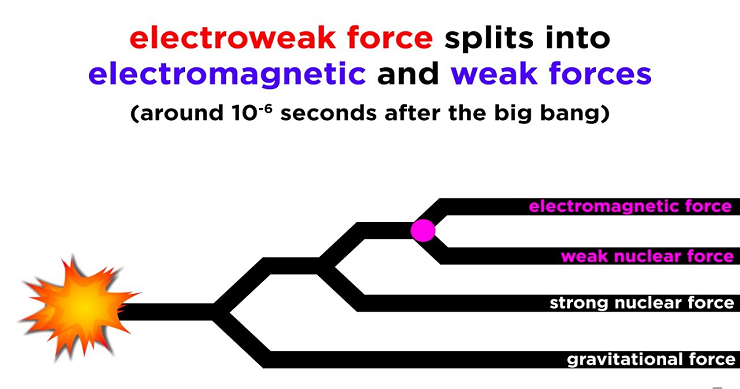Bridging the Cosmic Divide | The Quest for Quantum Gravity and the Missing Graviton | Uniting General Relativity and Quantum Mechanics to Unravel the Universe’s Earliest Moments
 In the century since mankind began to decipher the laws of nature, our understanding of the universe has grown by leaps and bounds. Yet, amid the triumphs of modern physics, one of the most perplexing puzzles remains unsolved: the nature of quantum gravity. At the very moment of the Big Bang, when all fundamental forces were merged into a single, incomprehensibly energetic state, lies the key to unifying general relativity with quantum mechanics. This elusive era has spurred researchers to probe deeper, aspiring to construct a theory of everything that could finally explain how space, time, and matter interconnect.
In the century since mankind began to decipher the laws of nature, our understanding of the universe has grown by leaps and bounds. Yet, amid the triumphs of modern physics, one of the most perplexing puzzles remains unsolved: the nature of quantum gravity. At the very moment of the Big Bang, when all fundamental forces were merged into a single, incomprehensibly energetic state, lies the key to unifying general relativity with quantum mechanics. This elusive era has spurred researchers to probe deeper, aspiring to construct a theory of everything that could finally explain how space, time, and matter interconnect.
Modern physics has given us the Standard Model—a framework that successfully describes the interactions of particles such as photons, W and Z bosons, and gluons, which mediate electromagnetism, the weak force, and the strong force. Despite these monumental advances, the gravitational force remains the odd one out. While experiments have confirmed the existence and behavior of the force carriers for the other three fundamental interactions, the graviton—the hypothetical quantum of gravity—continues to evade detection. The ongoing search for the graviton is emblematic of the broader quest to merge the macrocosmic laws of general relativity with the microcosmic rules of quantum mechanics.
Historically, breakthroughs such as the unification of electromagnetism with the weak force into the electroweak force have set the stage for the next monumental leap. Shortly after the Big Bang, all forces are believed to have been part of a single, unified interaction before breaking apart into distinct phenomena. Physicists now theorize that, under the extreme conditions of the early universe, even the strong nuclear force and gravity might have shared a common origin. This tantalizing possibility motivates the pursuit of a unified theory—a framework that could explain not only the forces we observe today but also the enigmatic conditions that prevailed during the universe’s first fleeting moments.
The challenge in unifying general relativity with quantum theory stems from their fundamentally different approaches. As professor Dave outlines in his video lecture, general relativity governs the vast scales of space and time, whereas quantum mechanics deals with the behavior of the tiniest particles. Their realms of validity rarely intersect, and when they do—such as in the heart of a black hole or the infancy of the cosmos—the theories appear mutually incompatible. This dichotomy underscores why developing a coherent quantum field theory for gravity is one of the most daunting tasks in modern physics.
Several competing theories attempt to bridge this gap. String theory posits that particles are not point-like but rather one-dimensional “strings” whose vibrational modes give rise to the fundamental particles and forces. Loop quantum gravity, on the other hand, seeks to quantize space-time itself, breaking it down into discrete loops. Both approaches strive to reconcile the well-tested predictions of quantum mechanics with the elegant geometric description of gravity provided by Einstein’s relativity. While experimental confirmation remains elusive, each theory brings us a step closer to understanding the deep connections that govern the cosmos.
Experimental endeavors further illuminate this quest. Advanced particle accelerators have begun to recreate conditions reminiscent of the early universe, allowing scientists to glimpse how the forces might have been unified before diverging into distinct interactions. Simultaneously, gravitational wave observatories like LIGO offer new methods to probe the fabric of space-time. These experimental breakthroughs, combined with sophisticated theoretical models, promise to refine our understanding of quantum gravity. As research continues, emerging scientists—perhaps even visionaries like you, John—may be poised to make the discoveries that will forever alter our grasp of the universe.
Looking ahead, the journey toward a theory of everything is as much about embracing the unknown as it is about celebrating our progress. Each new experiment and theoretical breakthrough fuels our collective curiosity and reaffirms that no mystery is insurmountable. As we edge closer to deciphering the quantum underpinnings of gravity, the prospect of unifying the forces of nature inspires a renewed sense of wonder. It is a call to future generations of researchers and enthusiasts to engage, collaborate, and push the boundaries of what is known, ensuring that the spirit of discovery continues to light our path through the cosmos.
Key Takeaways:
- Quantum Unification: Merging quantum mechanics with general relativity is crucial for unlocking the secrets of the universe’s earliest moments.
- The Graviton Enigma: The search for the elusive graviton highlights the frontier of modern physics and the ongoing quest to comprehend gravity’s quantum nature.
- Future Frontiers: Emerging theories and innovative experiments pave the way for breakthroughs that could redefine our understanding of the cosmos.
“Quantum gravity will indeed be developed; it’s not a matter of if, only when—and by whom. Maybe it could be you!”
Join us at SpeciesUniverse.com to dive deeper into the mysteries of quantum gravity and beyond. Engage with our articles, share your insights, and become part of a community passionate about exploring the fundamental truths of our universe. The next breakthrough in understanding the cosmos might just begin with you.
~Comments always welcome…
Reference:
- Professor Dave Explains (YouTube Channel)

Leave a Reply